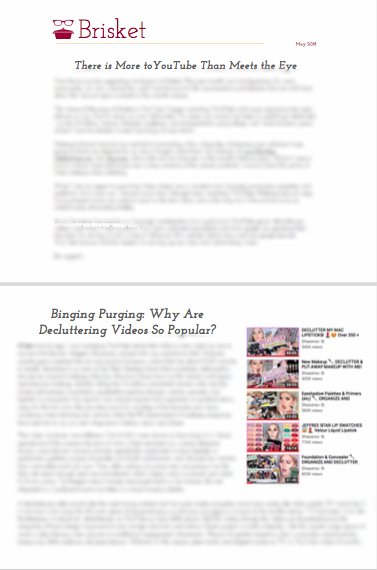“The more you learn,
the more you know you don’t know!!”
I found myself nodding vigorously in agreement when I read this line on Tuesday morning. It was written in response to a question I asked a fellow historian in her Member of the Week post on The Metropole. One of my responsibilities as co-editor of the Urban History Association’s blog is to run the Member of the Week series. I send emails asking fellow urbanists to respond to a set of canned questions that apply to almost everyone, but I also write one personalized question for each member. This week I featured a PhD who left an architectural preservation consulting firm to start a whole-animal butchery business with her husband. “The more you learn, the more you know you don’t know” was her immediate reaction when I asked her what parallels she sees between academia and entrepreneurship.
My week has been defined by this uncomfortable tension between knowing and the unknown. Two weeks ago I began teaching a mini-course at Carnegie Mellon on the evolution of “the ghetto” from Venice in 1516 up to the segregated black neighborhoods of present-day American cities. The first four class sessions are focused on Jews in the sixteenth through nineteenth centuries, and the rest of the course focuses on black Americans in the twentieth century. There are a few Jewish students in the class, but the majority are not, and so I have spent a lot of time explaining everything from the definition of “a Jew” to the diaspora to the distinction between “Ashkenazi” and “Sephardi.” On Wednesday night I broke down the differences between Orthodox and Reform Judaism, and described why tensions ran high between the established German Jewish community that immigrated to the US in the mid-nineteenth century and the Eastern European Jewish immigrants who arrived at the turn of the twentieth century. Standing up at the front of the room, in the role of professor and speaking as a Jew, for most of my students I am their foremost authority on am Yisrael, the Jewish people.
And then…. I go home, and return to my real life and the recognition of how little I know. On Twitter this past weekend I noticed a stream of tweets directed at a non-Jewish woman who described herself as a shiksa and expressed a desire to “rage bake” Trumpentashen in a show of interfaith solidarity and political resistance. I thought her tweet was fine, and didn’t blink twice at either her use of shiksaor baking hamentaschen. I appreciated the interest in our tradition! As I read through the replies, however, I learned about the origins of this derogatory term for non-Jews—and how hurtful it is for converts to Judaism, in particular. And I realized that other Jews on Twitter felt like she was appropriating Jewish culture.
It prompted me to think about the overlaps in the venn diagram between myself and other American Jews. I grew up in a smaller city with a small Jewish community. I was one of only a handful of Jews in my high school. Back then I would burst with pride and happiness at any expression of interest in Jews and Judaism from my peers, because the norm was being invited to church or overlooked. My senior prom was scheduled for the first night of Passover, forcing Jewish students to choose between attending seder or prom. That one of my peers would think to make hamentaschen would have thrilled me, not felt like appropriation.
And then yesterday on Hey Alma (which, by the way, I can’t recommend more highly) I read an article about Christian seders. I completely understand the argument that this is appropriation, but I also cannot tell you the number of times that I have been able to connect with non-Jews because their experience at their church seder familiarized them with Jewish traditions. I have hosted non-Jews at my own seders here in Pittsburgh who felt more comfortable joining in an interfaith celebration because they had a basic familiarity with how the meal would go. Do I think that this ultimately justifies the practice? Probably not. But I also don’t find myself mad about it.
Where I do find myself is stuck in the knowing/unknowning murk. I know enough to teach my non-Jewish students about my identity, religion, and culture, and I know enough to know how much I don’t know about Jews, Judaism, or Jewish culture. I think this is a point that often gets lost in our contemporary debates about identity politics. Many members of identity groups are still learning the contours of their histories and cultures. Tweets and articles like the ones I read this week are informative and important, but also speak on behalf of the entire Jewish community. Speaking for myself, I find this behavior alienating—even when it’s educational and in our own defense.
In addition to shouting out Hey Alma, which even some of my non-Jewish millennial girlfriends enjoy reading, I want to recommend a few other things I've been enjoying on the internet lately.
I love watching @julierosealex do her bold, colorful eye makeup looks on Instagram Live.
I'm obsessed with the podcast Erin and Aliee Hate Everything, particularly their feminist/queer hot takes on politics and pop culture.
Apps are not really the internet, but we do get them from the internet, ergo I include Woody Puzzle--my current favorite mind-numbing game.


